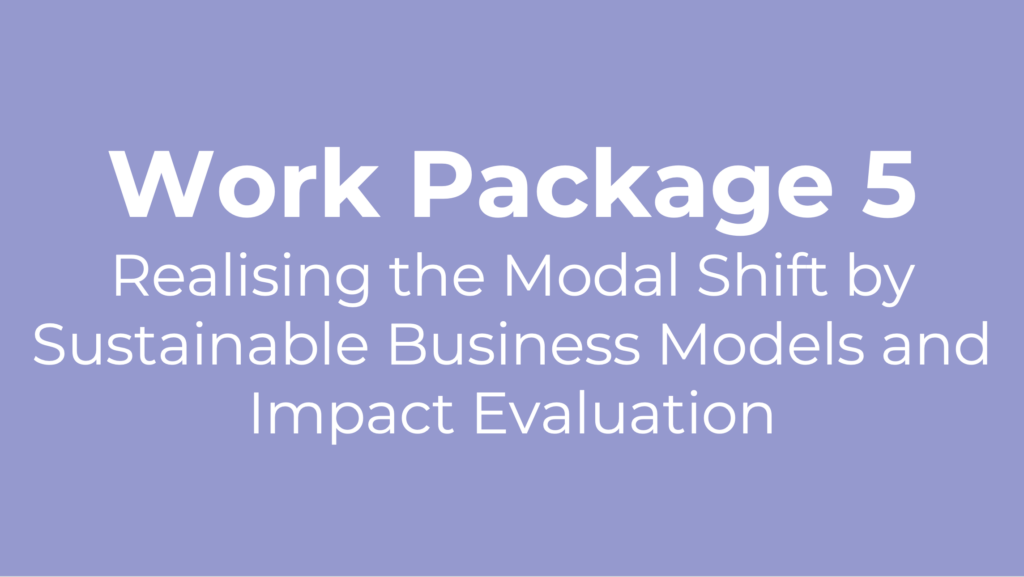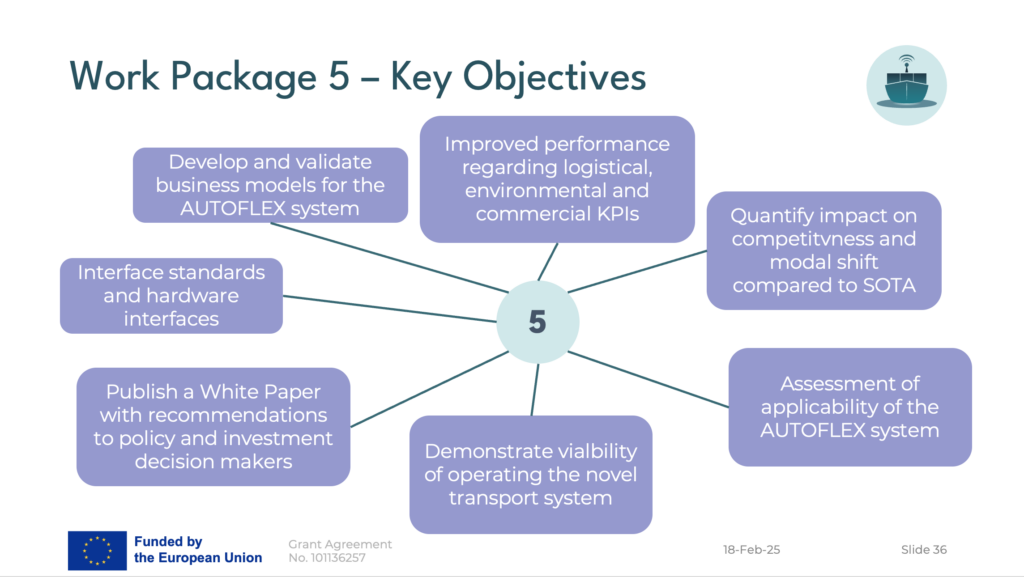

Early in the second project year, Work Package 5 officially started, and with it an other very important topic within AUTOFLEX. WP5 – Realising the Modal Shift (Business Models, Impacts, Standards, and Recommendations) – focuses on ensuring the successful implementation of the AUTOFLEX Transport system by developing viable business models and assessing its overall impact.
The core objective of WP5 is to develop and validate business models that support the services required for AUTOFLEX while demonstrating improved performance across logistical, environmental, and commercial key performance indicators. A key challenge is to ensure that the new transport system can operate efficiently and be included into existing logistics management and ICT systems.
WP5 will also quantify the impact of AUTOFLEX on competitiveness and modal shift by comparing it to the state-of-the-art transport market analysed in WP2. Additionally, the work package will evaluate how the AUTOFLEX concept can enhance the resilience of inland waterway transport (IWT), particularly in larger waterways affected by low-water conditions.
Beyond technical and business aspects, WP5 will contribute to shaping future autonomous inland navigation by defining interface standards, including relevant data protocols, data formats, and hardware interfaces. Finally, the work package will summarise all findings in a White Paper, offering key recommendations for policymakers and investment decision-makers to support the widespread adoption of autonomous, zero-emission inland freight transport.